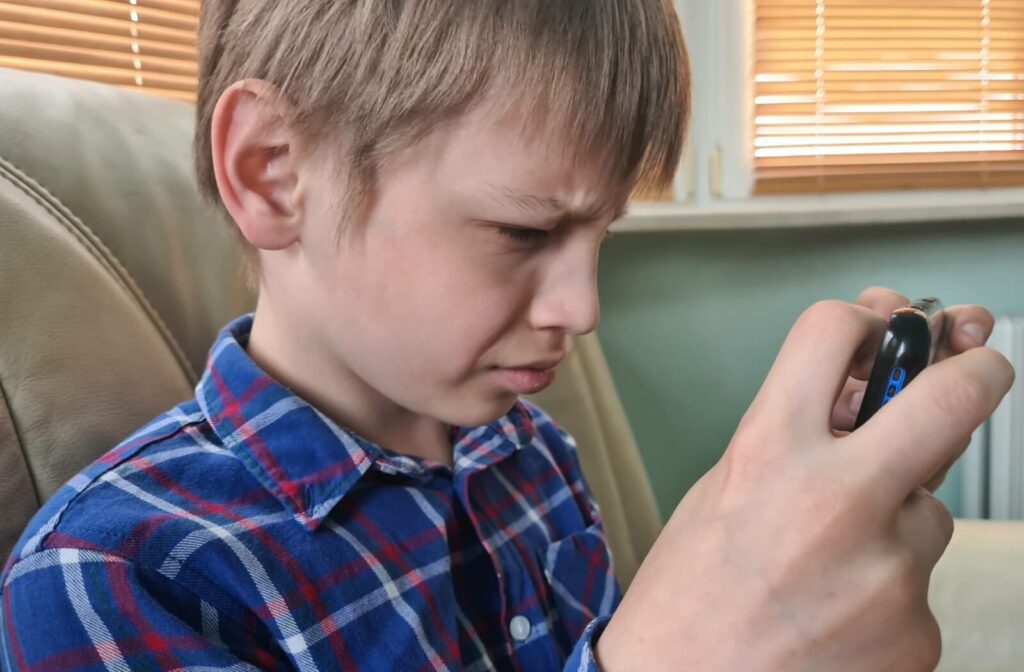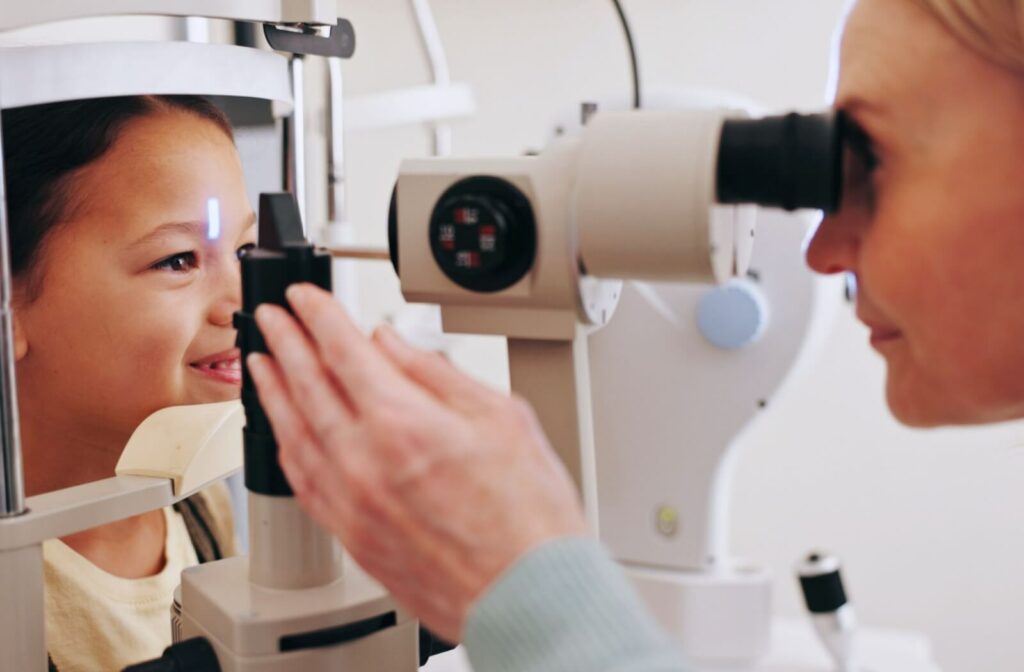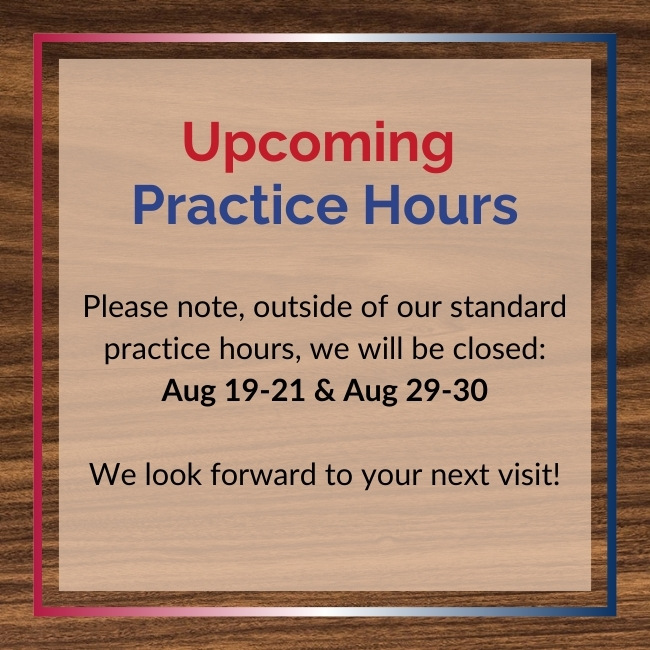Myopia, commonly known as nearsightedness, is on the rise globally, affecting an increasing number of people each year. Genetics, age, eye growth, environment, and lifestyle habits are all potential factors that contribute to the worsening of myopia.
While myopia cannot be reversed, there are various ways that your eye doctor can correct it for clear vision. There are also myopia control methods that can slow or stop myopic progression. However, the earlier myopia control is implemented, the better the results are likely to be. Regular eye exams are essential so your child’s eye doctor can track myopia progression over time.
What Is Myopia?
Myopia, commonly known as nearsightedness, is a vision condition where distant objects appear blurry, while close objects can be seen clearly. It occurs when the eyeball is too long, or the cornea is too curved, causing light to focus in front of the retina instead of directly on it. Myopia is often diagnosed in childhood and can progress over time.
Symptoms of Myopia
Symptoms of myopia can include:
- Blurry vision when looking at distant objects
- Squinting
- Eye strain
- Headaches
- Difficulty seeing while driving, especially at night
Common Causes of Myopia Progression
There are usually 4 common causes and risk factors for myopia progression.
Genetics
If myopia runs in the family, the likelihood of inheriting it increases significantly. Children with 1 or both parents who are nearsighted are more prone to developing myopia than those without a family history. Genetic predisposition doesn’t guarantee worsening myopia, but it places people at higher risk.
Age & Eye Growth
Myopia often develops in childhood when the eye is still growing. The progression typically continues until the late teens or early twenties, slowing down once the eye reaches its full size. Rapid growth spurts during the school years can lead to more rapid changes in vision.
Environmental Factors
Prolonged close-up activities like reading, writing, and screen usage are frequently linked to myopia progression. Additionally, insufficient exposure to natural light during childhood may play a role. Studies have shown that children who spend more time outdoors are less likely to develop severe myopia compared to those who spend most of their time indoors.

Lifestyle Habits
Certain habits can aggravate nearsightedness. Long hours of screen time without breaks, poor lighting conditions while reading, and irregular sleep patterns are all contributors. Overworking your eyes can strain them and potentially lead to further vision deterioration.
How to Help Prevent or Slow Myopia
The good news is that while you can’t change genetics or stop aging, there are plenty of healthy vision habits and strategies that can help slow myopia progression.
Follow the 20-20-20 Rule
One of the simplest ways to reduce eye strain is the 20-20-20 rule. Every 20 minutes, take a 20-second break and look at something 20 feet away. This short break helps your eyes relax and recover from prolonged screen or close-up work.
Prioritize Outdoor Play
Encourage kids to spend more time outside. Engaging in approximately 2 hours of daily outdoor activity can help slow the progression of myopia. Natural light exposure benefits eye health in ways artificial light cannot replicate.
Create an Eye-Friendly Environment
Ensure your living and working spaces are well-lit to avoid unnecessary strain. When reading or working, position light sources above or behind you to reduce glare. An ergonomic setup for screens at eye level can also minimize strain.
Balance Screen Time
We live in a digital world, but minimizing unnecessary screen time is crucial. Schedule breaks during prolonged use, enable blue light filters on your devices to reduce the impact on your sleep habits, and prioritize tasks that don’t require digital devices whenever possible.
Encourage Physical Activity
Regular exercise can improve overall health, including circulation to the eyes. While this doesn’t directly stop myopia, a healthy lifestyle supports longer-term eye health.
Common Myopia Control Methods
Besides healthy habits, medical interventions can also help prevent myopia from worsening.
Prescription Glasses or Contact Lenses
Corrective lenses are often the first line of defence against myopia. Single-vision lenses correct blurry distance vision, while specialized lenses, such as multifocal or myopia-control lenses, can help manage the progression of myopia in children.
Orthokeratology (Ortho-K)
Ortho-K involves wearing custom-fitted, rigid contact lenses overnight to temporarily reshape the cornea. These lenses not only correct vision but may also slow the progression of myopia, particularly in children.
Multifocal Contact Lenses
Multifocal lenses are designed to provide both near and distance correction, helping to manage myopia while offering sharper focus at various distances.
Low-Dose Atropine Eye Drops
Atropine drops, used in low concentrations, have been shown to slow the progression of childhood myopia effectively. Glasses or contacts are still necessary to correct myopia because atropine only slows its progression.
Personalized Myopia Management at Advanced Eyecare Optometry
We understand that managing myopia requires a personalized approach. Every eye is unique, and our expert eye doctor at Advanced Eyecare Optometry are here to find the right solutions for you or your child. From comprehensive eye exams to tailored myopia control plans, we’ll guide you every step of the way.
Request an appointment today to explore how we can help you or your child maintain healthy vision for life.




